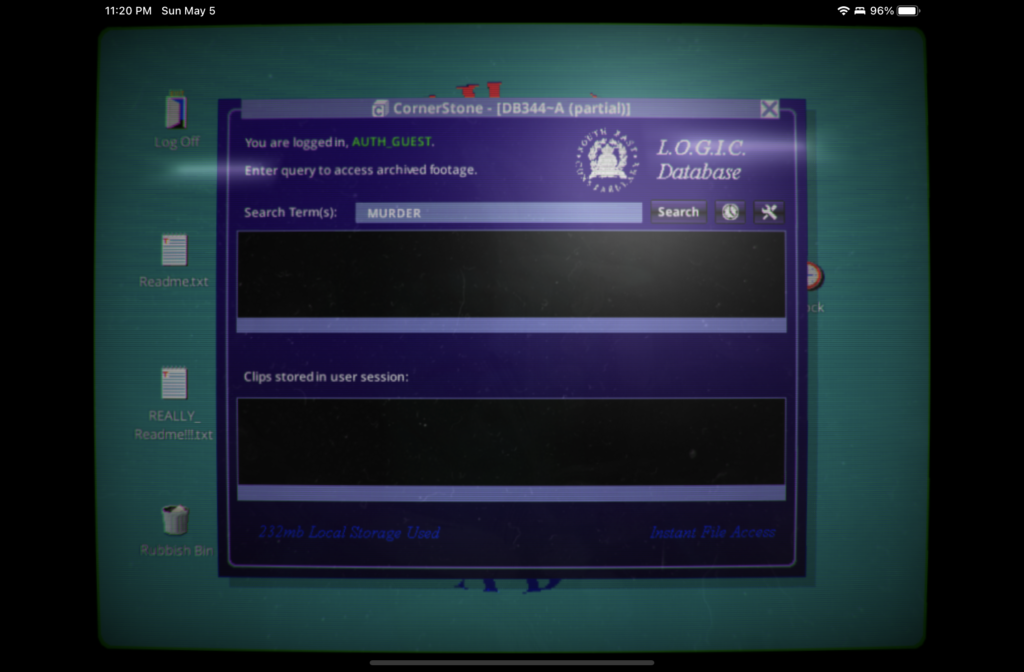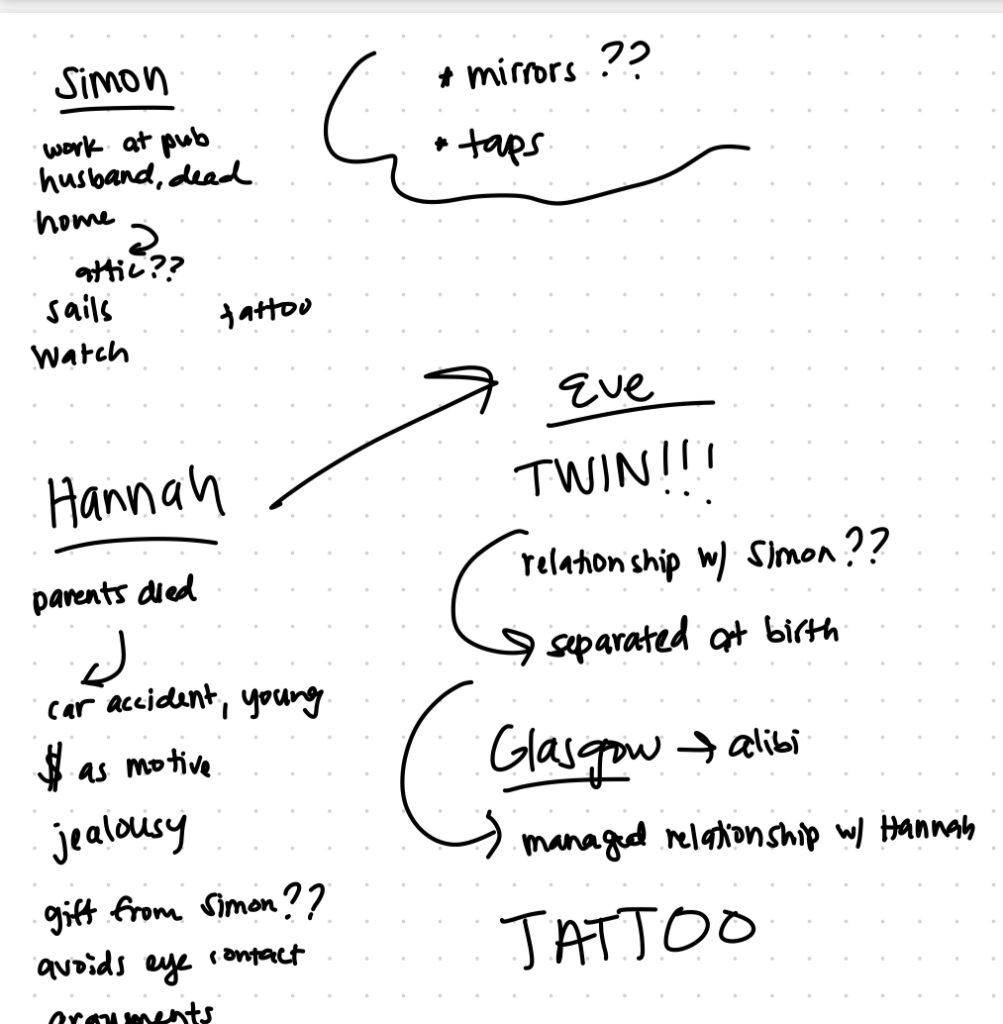“Her Story” masterfully weaves its narrative into the mystery by utilizing a unique interactive mechanic of video clip databases and keyword searches, which not only dictate the flow of information but also place players directly in the detective’s shoes, actively shaping their investigative journey. This design exploits the inherent human fascination with piecing together incomplete stories and discovering the new, leveraging both the limited and controlled environment and the intrinsic motivation to uncover hidden truths. The game’s narrative structure skillfully employs arcs and loops, with players revisiting earlier clips under new insights, which reinforces the unfolding of a complex, gradually revealed story through iterative discovery and understanding.
In “Her Story,” which was developed by Sam Barlow for online platforms (phones, tablets, computers) in 2015 for ages 17+, the narrative is delivered through a fragmented array of brief, contextually ambiguous video clips accessed via keyword search through a simulated computer interface, which is central to how the story unfolds. The search mechanism is crucial as it actively involves players in the narrative construction, effectively making them co-creators of the storyline. Each keyword entered leads to new insights, mirroring real investigative processes and making the discovery of each narrative piece feel earned and significant. Unlike more traditional, linear mystery games like “L.A. Noire,” which guides players through a more predictable path with 3D interactions, “Her Story” engages players through this minimalistic yet deeply immersive interface that challenges them to drive the narrative forward, offering a uniquely personal and intellectually engaging experience. This innovative approach not only differentiates it in the mystery genre but also highlights its role in pioneering new forms of interactive storytelling.
The architecture of the setting—a single, outdated computer desktop—further controls and enhances the storytelling. This constrained digital environment limits the player’s perspective to what can be found in the database, compelling them to think critically and creatively with the available data. The interface, complete with its retro aesthetic and police station sounds, not only sets the mood but also subtly guides the player’s expectations and thought processes. It creates a closed world where the boundaries of narrative exploration are defined by the edges of the screen, in my case, my iPad, focusing the player’s attention and effort on the video clips provided. In my gameplay, one of the first things I noticed was that even the rules of the game are cleverly integrated into this setting, presented as a file on the desktop. This design choice ensures that the narrative remains uninterrupted, reinforcing the feeling of conducting a real investigation within a police database. This shows use of both an embedded narrative, where players progress through exploration, and an evocative space, with a heavy focus on the atmosphere created.


The game’s structure also capitalizes on narrative loops and arcs effectively. The looping occurs as players repeatedly encounter the same clips with different levels of understanding, prompted by the acquisition of new information. This mechanism allows for a deepening of the narrative’s complexity with each loop, as earlier viewed clips gain new meanings or reveal overlooked details. These loops contribute to the overarching narrative arc, which gradually emerges as a coherent story from the seemingly disjointed clips. This evolving understanding of the narrative not only keeps the gameplay dynamic but also deeply personalizes the experience, as each player constructs a slightly different story based on the paths they choose and the connections they make. During my playthrough, I initially heard a peculiar tapping sound in one of the early clips where Hannah is being interviewed. At first, it seemed like an insignificant detail or perhaps just a nervous tic. However, as I continued exploring and found references to secret communications between Hannah and Eve, I remembered the tapping. When I revisited the clip with this newfound context, I realized the tapping was actually a code used for communication between the sisters. This revelation not only shifted my understanding of earlier clips but also enriched the storyline, illustrating how the game employs narrative loops where the same clip gains new meaning with additional insights. However, this connection took me a long time to reach, I had to go back to previous searches to fully remember what stood out to me; I think this brings up a key place for improvement of the game. I found myself taking some notes on a different app on my iPad to keep track of things that stuck out to me, but to further enhance the immersion, a place to take notes within the game itself would have kept me in the game’s boundaries.

“Her Story”‘s gameplay reflects a deep understanding of game psychology, specifically the allure of solving mysteries. It taps into the intrinsic human desire to explore and make sense of the unknown. By presenting a narrative that is intentionally incomplete and requiring the player to actively fill in the gaps, the game engages natural investigative impulses, making the eventual piecing together of the story satisfying and rewarding. While I did not fully “complete” the game, and it does not seem like there is actually a specific moment of completion, uncovering the story kept me in my flow state, and piecing together large parts of the mystery was extremely satisfying.



